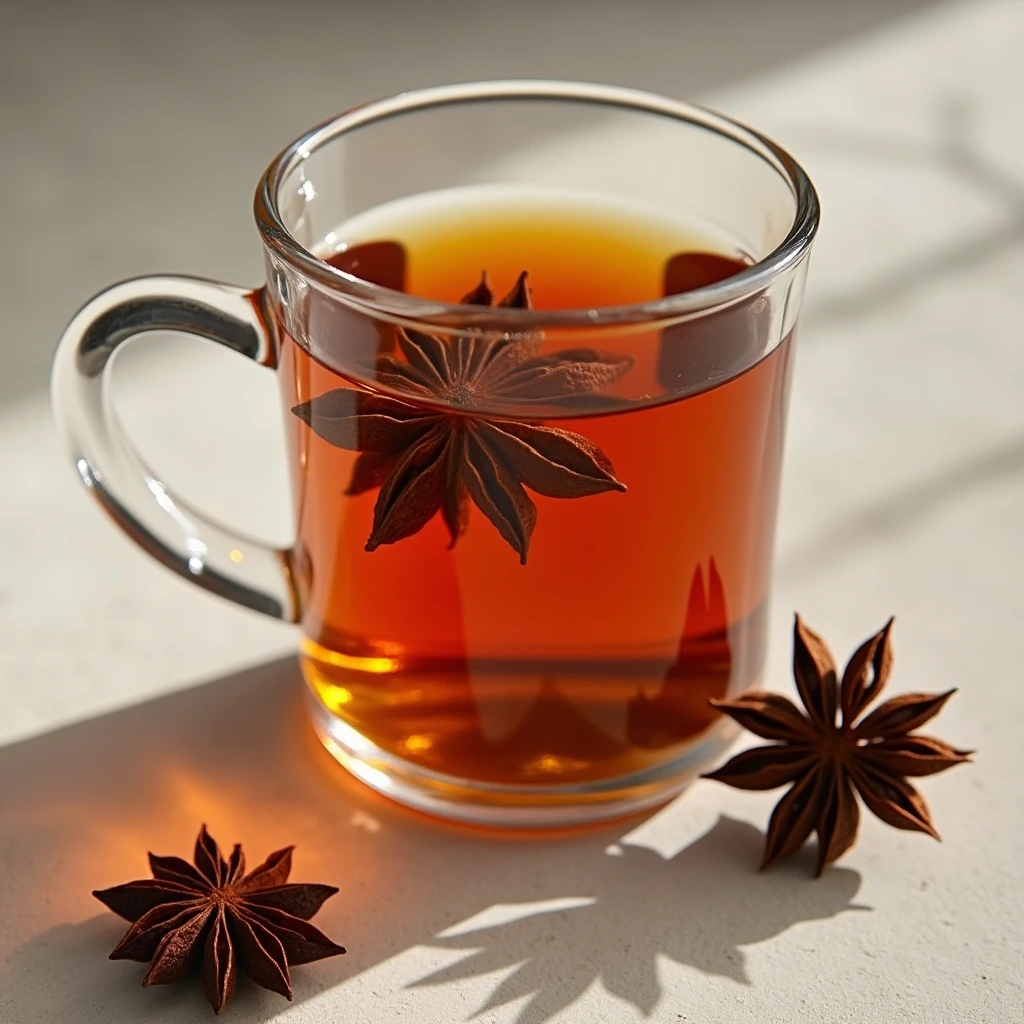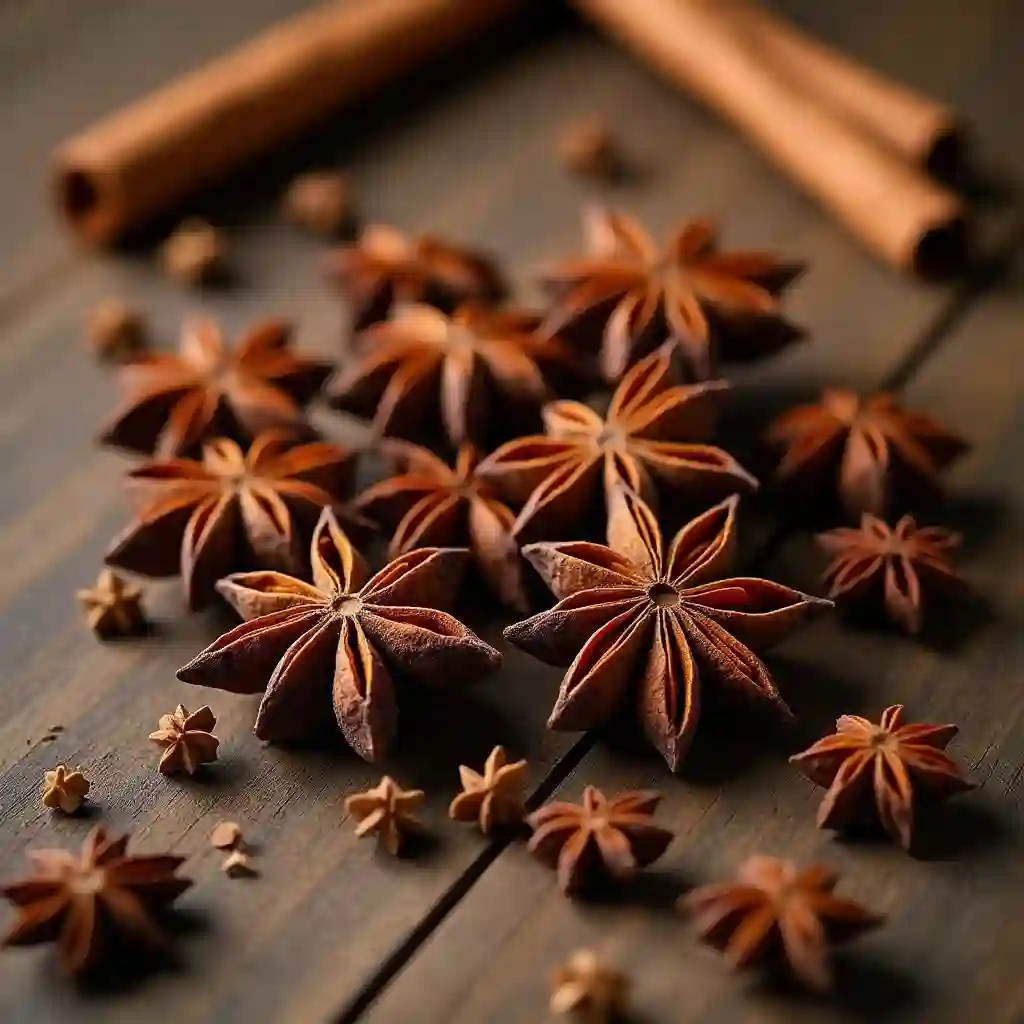Star anise, with its unique star-shaped pods and warm, licorice-like flavor, is more than just a spice—it’s a kitchen superstar, a natural remedy, and a cultural icon. Whether you’re a home cook looking to spice up your meals or someone curious about its health benefits, this guide has you covered. From its origins and flavor profile to its uses in global cuisines and skincare, we’ll explore everything you need to know about star anise. By the end of this article, you’ll not only appreciate its versatility but also discover how to make it a part of your daily life. Let’s dive in!
What is Star Anise?
The Origins of This Unique Spice
This warm, aromatic spice comes from the fruit of the Illicium verum tree, native to China and Vietnam. Its star-shaped pods have been used for centuries, not just in cooking but also as a symbol of good luck and prosperity. Historically, it was one of the first spices traded along the ancient Silk Road, connecting cultures through its rich aroma and flavor.
Today, it’s primarily grown in tropical regions, with China being the largest producer. The pods are harvested by hand and dried in the sun, turning them into the deep reddish-brown spice we know and love.
Clearing Up the Confusion: Star Anise vs. Anise Seed
Despite their similar names and flavors, this spice and anise seed come from entirely different plants. While both share a licorice-like taste due to a compound called anethole, Illicium verum has a more complex flavor profile. It’s sweeter and warmer, making it a favorite in both savory and sweet dishes.
Anise seed, on the other hand, is milder and often used in baking and liqueurs. So, while they can sometimes substitute for each other, they’re not always interchangeable. Knowing the difference helps you use this spice effectively in your cooking.
The Flavor Profile of Star Anise
A Taste of Warmth and Sweetness
If you’ve ever wondered what this spice tastes like, think of a warm, sweet, and slightly spicy flavor with a strong licorice-like kick. Its unique taste comes from anethole, the same compound found in anise seed and fennel. However, Illicium verum has a deeper, more layered flavor that adds richness to dishes.
For example, in savory recipes like Vietnamese pho or Chinese braised pork, it brings a warm, earthy depth. In desserts, like spiced cookies or mulled wine, it adds a sweet, aromatic touch that’s hard to resist.
How It Compares to Other Spices
While this spice and cinnamon are both warm and aromatic, they’re not the same. Cinnamon has a sweet, woody flavor, while Illicium verum leans more toward licorice with a hint of sweetness. That said, they often work well together in recipes like mulled wine or spiced desserts.
Culinary Uses of Star Anise

A Versatile Ingredient in the Kitchen
This spice is a star player in many dishes, especially in Asian cuisines. For example, it’s a key ingredient in Vietnamese pho, where it adds a warm, aromatic base to the broth. In Chinese cuisine, it’s often used in braised dishes like red-cooked pork, giving them a rich, savory flavor.
Indian cuisine also embraces this spice, especially in biryani and garam masala blends. Its sweet, licorice-like taste pairs perfectly with other spices like cinnamon, cloves, and cardamom.
Best Substitutes When You’re Out
If you don’t have this spice on hand, there are a few substitutes you can try. Anise seed is the closest match, though it’s milder. Fennel seeds also work well, offering a similar licorice flavor. For a different twist, use Chinese five-spice powder, which already contains this spice.
When substituting, start with a small amount and adjust to taste. Remember, this spice has a strong flavor, so its alternatives may not be as potent.
We have other great recipes that you will definitely like. Click on the following links:
Sweet and Savory Recipes to Try
This spice isn’t just for savory dishes—it’s a secret weapon in baking too. Its sweet, aromatic flavor pairs beautifully with fruits like apples, pears, and oranges. For example, add a pod to your next batch of spiced cookies or a fruit compote for a warm, festive touch.
It’s also a great addition to desserts like rice pudding or custard. Simply steep a pod in the milk or cream to infuse its flavor. And let’s not forget holiday favorites like gingerbread or mulled wine, where this spice adds a cozy, aromatic note.
Health Benefits of Star Anise

A Natural Remedy for Wellness
This warm, aromatic spice isn’t just for cooking—it’s also packed with health benefits. For centuries, it’s been used in traditional medicine for its antioxidant, anti-inflammatory, and antimicrobial properties. These qualities make it a natural remedy for a variety of ailments.
For example, it’s rich in shikimic acid, a compound used in the production of antiviral medications like Tamiflu. This makes it a popular choice during cold and flu season. Additionally, its antioxidants help fight free radicals, reducing the risk of chronic diseases.
Soothing Digestive Troubles
If you’ve ever felt bloated or uncomfortable after a meal, this spice might be the answer. It’s known to aid digestion by reducing gas, bloating, and stomach cramps. One of the easiest ways to enjoy its benefits is by brewing a cup of tea. Simply steep a pod in hot water for 5-10 minutes, and you’ll have a soothing, aromatic drink that’s great after meals.
Moreover, it can help relieve nausea and indigestion. Its natural compounds stimulate digestive enzymes, making it easier for your body to break down food. So, the next time you’re feeling off after a heavy meal, reach for this spice.
What to Watch Out For
While this spice is generally safe, there are a few things to keep in mind. First, always use Chinese star anise (Illicium verum), as Japanese star anise (Illicium anisatum) is toxic and not fit for consumption. Second, moderation is key—consuming too much can lead to side effects like nausea or dizziness.
Pregnant women and young children should also avoid large amounts of this spice, as its compounds can be too strong for their systems. When in doubt, consult a healthcare professional before using it medicinally.
Star Anise in Aromatherapy and Skincare
Relaxing with Essential Oils
This spice isn’t just for cooking—it’s also a star in aromatherapy. Its essential oil, extracted from the seeds, is known for its calming and uplifting properties. A few drops in a diffuser can help reduce stress, improve focus, and even freshen up your home.
Additionally, the oil has antimicrobial properties, making it a great natural cleaner. Mix a few drops with water and vinegar for a DIY surface spray that’s both effective and aromatic.
DIY Skincare Solutions
Looking for a natural way to improve your skin? This spice might be the answer. Its antimicrobial and anti-inflammatory properties make it a great choice for treating acne and soothing irritated skin.
One simple DIY recipe is a face toner. Steep a pod in hot water, let it cool, and mix with a bit of witch hazel. Apply it to your skin with a cotton pad for a refreshing, clarifying treatment.
For more glowing skin, try adding a drop of the essential oil to your favorite moisturizer. Its warming properties can boost circulation, giving your skin a healthy, radiant look.
Growing and Harvesting Star Anise
From Tree to Table
This spice comes from the fruit of an evergreen tree called Illicium verum, which thrives in warm, tropical climates. These trees are mostly found in regions like southern China and Vietnam, where the soil and weather are just right for their growth.
The trees can grow up to 65 feet tall and take about six years to produce their first fruit. Once the fruit is ripe, it’s picked by hand and dried in the sun until it turns a deep reddish-brown color. This drying process is crucial because it locks in the spice’s strong flavor and aroma.
Supporting Sustainable Practices
As demand for this spice grows, so do concerns about sustainability. Overharvesting and poor farming practices can harm the environment and reduce the quality of the spice. That’s why it’s important to choose products from ethical sources.
Look for brands that support fair trade and sustainable farming. These companies often work directly with farmers to ensure fair wages and eco-friendly practices. By making mindful choices, you can enjoy this spice while helping protect the planet.
Star Anise in Global Cuisines
A Staple in Asian Dishes
In Asian cooking, star anise is a must-have spice. It’s a key ingredient in Vietnamese pho, where it adds a warm, aromatic base to the broth. In Chinese cuisine, it’s often used in braised dishes like red-cooked pork, giving them a rich, savory flavor.
Indian cuisine also embraces star anise, especially in biryani and garam masala blends. Its sweet, licorice-like taste pairs perfectly with other spices like cinnamon, cloves, and cardamom.
Adding Flair to Western Recipes
While star anise is a staple in Asian dishes, it’s also making its way into Western kitchens. For example, it’s a popular addition to holiday recipes like mulled wine and spiced cider. Its warm, sweet flavor adds a festive touch that’s hard to resist.
In baking, star anise can be used to flavor cookies, cakes, and even bread. Try adding a pod to your next batch of gingerbread or apple pie for a unique twist. It’s also great in savory dishes like stews and roasts, where it adds depth and complexity.
In short, star anise is a versatile spice that works well in both traditional and modern recipes. Whether you’re cooking an Asian classic or a Western favorite, it’s sure to elevate your dish.
FAQs About Star Anise
Common Questions Answered
Star anise is a versatile spice used in cooking, medicine, and even skincare. In the kitchen, it’s a key ingredient in dishes like pho, biryani, and mulled wine. Medicinally, it’s known for its digestive benefits and is often brewed into tea. Additionally, its essential oil is used in aromatherapy and natural skincare routines.
Substitutes and Flavor Tips
If you don’t have star anise on hand, there are a few substitutes you can try. Anise seed is the closest match, though it’s milder. Fennel seeds also work well, offering a similar licorice flavor. For a different twist, use Chinese five-spice powder, which already contains star anise. Just remember to adjust the amount to suit your taste.
What Flavor Does Star Anise Taste Like?
Star anise has a warm, sweet, and slightly spicy flavor with a strong licorice-like taste. It’s often compared to anise seed but has a deeper, more complex profile. This makes it perfect for both savory dishes and sweet desserts.
Is Star Anise Like Cinnamon?
While both spices are warm and aromatic, star anise and cinnamon have distinct flavors. Cinnamon is sweet and woody, while star anise leans more toward licorice with a hint of sweetness. That said, they often pair well together in recipes like mulled wine or spiced desserts.
Conclusion
Why This Spice Belongs in Your Pantry
From its rich history to its countless uses, star anise is truly a remarkable spice. Whether you’re cooking a hearty stew, baking a sweet treat, or brewing a soothing tea, it adds a unique flavor that’s hard to match.
Moreover, its health benefits and versatility in skincare make it a valuable addition to your daily life. By choosing ethically sourced star anise, you can enjoy its many perks while supporting sustainable practices.
So, the next time you’re in the spice aisle, don’t overlook this star-shaped wonder. With its warm, aromatic flavor and wide range of uses, star anise is sure to become a staple in your kitchen.




